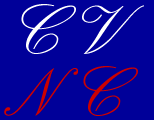|
 Folk
Music Links Composers on Contiguglia Brothers' Enterprising Piano
Program Folk
Music Links Composers on Contiguglia Brothers' Enterprising Piano
Program
CVNC,
North Carolina
October 25, 2011
by William
Thomas Walker
Area music
lovers always look forward to the Adams Foundation Piano Recitals,
given in the acoustical jewel box that is Whitley Auditorium at Elon
University in fall and spring; now in the 11th season, the series is
co-presented by the Burlington Times-News. The foundation is
the creation of Stephen Adams, who was the roommate of Richard and
John Contiguglia at Yale University. The identical twin brothers are
internationally known duo-pianists who studied with Dame Myra Hess
for four years. A major goal of the foundation is to support the
vanishing piano solo recital and to bring great music and performers
to underserved smaller communities. The brothers were instrumental
in bringing the series to Elon and, every few years, they appear to
perform unique programs, the most recent being a Schubertiad evening
and an all-Liszt rarities concert.
Selections
from Percy Grainger (1882-1961), both as composer and as skilled
transcriber, made for a rich pre-intermission menu. Four folk song
settings, three for two pianos and one for one piano-four hands,
opened the recital. When the brothers were 12 years old, they played
a group of two-piano pieces in the middle of a solo-piano recital by
Grainger in their home town of Auburn, New York. The legendary
pianist presented the brothers with two of his scores, "Molly on the
Shore" and "Shepherd's Hey," which were played first on this
recital. Grainger ingeniously combines two Irish reels, "Molly on
the Shore" and "Temple Hill" in the first setting. The second
setting abounds in Baroque counterpoints and harmonies. Grainger so
heavily utilizes original and melodic material it overwhelms the
original melody of the third setting, "Spoon River," an American
fiddle tune. The one piano-four hands setting, "Lets Dance Gay," is
based on a Faroe Island dance folk song in which 7- and 12-measure
phrases are abruptly alternated. These wild, rather daunting dances
can go on for eight hours at a stretch. To convey this sense in a
brief setting, Grainger stops his score in mid-dance. The Contigulia
brothers made fine use of Elon's superb pianos, conjuring a wide
palette of tonal color while maintaining precise rhythms and close
co-ordination between instruments.
According
to the Contigulia Brothers' excellent, succinct program notes,
Grainger was one of the first important musicians fully to
appreciate the greatness of Porgy and Bess by George Gershwin
(1898-1937). While the Australian-born Grainger focused his
attention on the folk music of Scandinavia and the British Isles,
Gershwin was heavily influenced by jazz and Gospel music of Black
Americans. Barely a decade after the opera's truncated Broadway
premiere, Grainger took some nine of the best solo songs and choral
pieces and wove them into a twenty-five minute suite called
Fantasy on George Gershwin's 'Porgy and Bess'. After distilling
the composer's short, whirling opening including Jazzbo Brown's
piano blues, the nine major pieces receive extended treatment
beginning with "My Man's Gone Now," followed by "It Ain't
Necessarily So," "Clara, Don't You Be Down-hearted," "The Strawberry
Call," "Summertime," "Oh, I Can't Sit Down," "Bess You Is My Woman
Now," "Oh, I Got Plenty O'Nuttin," and "Oh, Lawd, I'm On My Way."
The Contigulia Brothers captured the mood of each selection within
the suite superbly, suggesting Gershwin's inventive orchestral
colors and distinctive rhythms.
The
Contiguglia Brothers ended the first half of the recital with a
lovely performance of Grainger's signature piece "Country Gardens."
There is
little on the surface to suggest folk songs in the Sonata for Two
Pianos and Percussion by Béla Bartók (1881-1945). Much more than
either Gershwin or Grainger, Bartók systematically recorded folk
music extensively throughout Hungary, Romania, and Slovakia, and
drew upon it to develop his own style. The score calls for two
percussionists to play three timpani, two side drums, one with and
one without snares, a suspended cymbal, a pair of cymbals, a bass
drum, a triangle, and a tam-tam (gong). It is in three movements.
The first and longest movement has an enormous dynamic range and
(according to program notes by the artists) is layered with
"numerous contrapuntal devices, canons, inversions, ostinati, and
even a fugue." The rhythmic relationships between the pianists and
the percussionists are very complex. The gorgeous second movement
mixes Impressionism with Bartók's characteristic "Night Music" using
"shimmering chromatic effects, glissandi on black keys in thirds,
simultaneous scales on black and white keys, and chromatic phrases
between the pianos and xylophone" conjuring the natural world. The
third movement, a rondo, is melodic and whimsical. There is a
deliberate section of "out-of place" accents meant to evoke a
drunken pianist!
Richard
Contigulia described the Sonata as a one-of-a-kind masterpiece
during brief remarks before the performance. The brothers were
joined by the very able percussionists John Beck from the University
of North Carolina School of the Arts and Greensboro Symphony
principal percussionist Wiley A. Sykes III. From a front row balcony
seat, the Sonata was a feast for the eyes and ears and a constantly
evolving puzzle for the mind! Balance between the pianists and
percussionists was excellent and the co-ordination was very precise.
The execution of the complex contrapuntal layering of the first
movement was breathtaking. The eerie night music of the second
movement was perfectly spun out. The high jinks of the finale
brought the unusually large audience to its feet in prolonged
applause for a wonderful performance of a too seldom heard
masterpiece. May the Contigulia Brothers return to Elon soon with,
maybe, another memorable Schubertaid or an evening of Mozart?
|